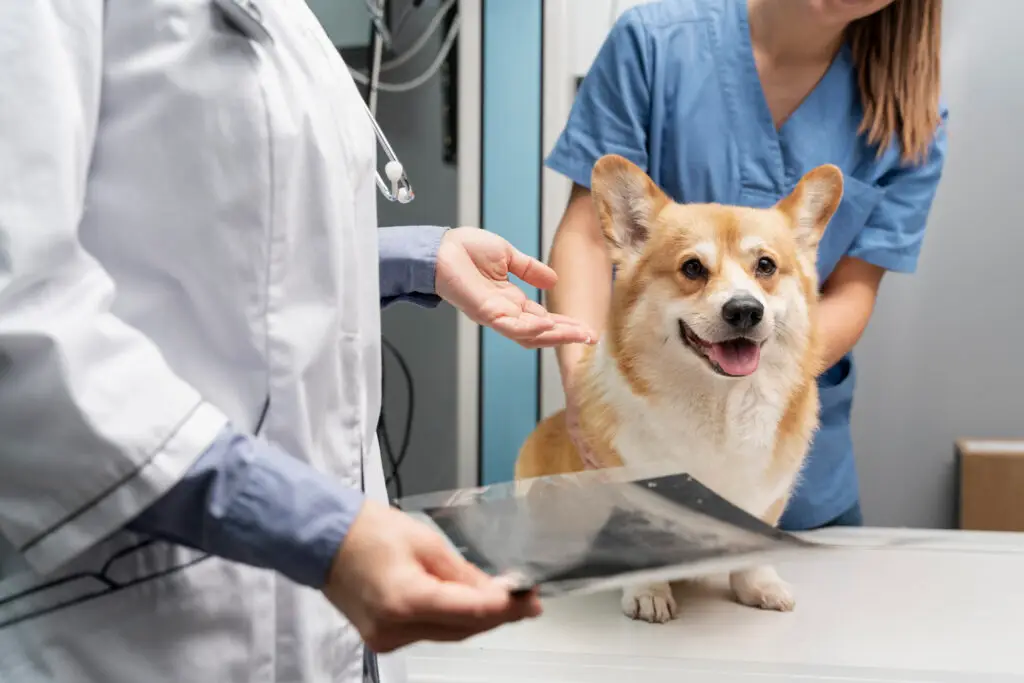Starting a Pet Clinic in India? Compare Costs in Metro and Small Towns
Table of Contents
Introduction
India’s pet care industry is booming.
From grooming salons to advanced veterinary diagnostics, the demand for quality Animal Healthcare Clinics is on the rise.
If you’re planning to start a pet clinic or veterinary practice, one of the most critical factors to consider is the cost of setup and operations, which can vary drastically based on location.
Whether you’re opening a clinic in a bustling metro like Mumbai or a growing Tier II town like Nagpur, understanding the differences in cost structures can help you plan effectively and avoid surprises.
In this article, we break down the complete cost comparison of starting a veterinary clinic in metro cities versus small towns in India.
Metro Cities vs Small Towns: Cost Comparison for Pet Clinics
Expense Category | Metro Cities (e.g., Mumbai, Delhi, Bengaluru) | Small Towns (e.g., Nagpur, Surat, Indore) |
Premises (Rent/Lease) | ₹50,000 – ₹2,00,000/month | ₹10,000 – ₹50,000/month |
Renovation & Interiors | ₹5 lakh – ₹25 lakh+ | ₹2 lakh – ₹8 lakh |
Basic Equipment | ₹5 lakh – ₹20 lakh+ | ₹2 lakh – ₹7 lakh |
Licensing & Compliance | ₹50,000 – ₹2 lakh | ₹30,000 – ₹1 lakh |
Staff Salaries | ₹25,000 – ₹60,000/month per vet | ₹15,000 – ₹35,000/month per vet |
Utilities & Maintenance | ₹10,000 – ₹30,000/month | ₹5,000 – ₹12,000/month |
Marketing & IT | ₹1 lakh – ₹5 lakh | ₹50,000 – ₹2 lakh |
Consumables & Medicines | ₹25,000 – ₹1 lakh/month | ₹10,000 – ₹40,000/month |
Total Initial Setup | ₹20 lakh – ₹50 lakh+ | ₹5 lakh – ₹15 lakh+ |
How do setup costs differ for a pet clinic in small towns or Tier 3 cities?
Opening a pet clinic in small towns or Tier 3 cities is significantly more cost-effective than in metros.
While core functions remain the same, treatment, vaccination, and consultation, the cost structure shifts in several key areas:
Expense Category | Metro Cities | Tier 3 Cities | Why It’s Cheaper in Tier 3 |
|---|---|---|---|
Clinic Rent & Deposit | ₹3–6 Lakhs | ₹50,000–₹1.5 Lakhs | Lower commercial rent, fewer regulations on commercial space |
Interior Setup | ₹2.5–4 Lakhs | ₹80,000–₹1.5 Lakhs | Basic furnishing is acceptable; no need for high-end interiors |
Staff Salaries (3 months) | ₹2–3 Lakhs | ₹75,000–₹1.2 Lakhs | Lower local wage expectations |
Licensing & Registration | ₹30,000–₹60,000 | ₹15,000–₹30,000 | Fewer municipal fees or simplified registration processes |
Equipment & Supplies | ₹3–6 Lakhs | ₹2–3 Lakhs | Limited diagnostic tools are needed initially; many clinics rent devices |
Marketing | ₹50,000–₹1 Lakh | ₹10,000–₹30,000 | Word-of-mouth and community-based marketing are more effective |
Total Estimated Setup Cost in Tier 3 City:
₹4–8 Lakhs
Compared to metros, this is almost 60–70% cheaper.
Key Benefits for Tier 3 Setup:
Less competition and faster patient base growth.
Stronger community trust in local veterinary practice.
Local tie-ups for pharma supplies reduce procurement costs.
Note: Many Animal Healthcare Clinics in rural belts also double as vaccination camps or partner with NGOs, which further reduces running costs.
Key Differences
1. Real Estate Costs
Rent is the biggest differentiator.
Metro clinics require much higher monthly investments due to prime commercial space pricing.
In contrast, small towns offer affordable rental options, enabling lower startup capital.
2. Equipment Investment
Clinics in metro cities often invest in:
* Advanced diagnostics: digital X-ray, ultrasound, ECG
* Surgical and dental units
* Specialized grooming stations
In small towns, many clinics begin with just the essentials exam table, an autoclave, a microscope, and a basic surgical setup, and expand as the patient base grows.
3. Staffing Costs
Due to the cost of living and competitive hiring in metros, vets and assistants demand higher salaries.
In small towns, wage levels are relatively modest, but so is the talent pool, requiring more investment in training.
4. Clinic Scale and Services
Metro clinics often evolve into multi-specialty practices with:
* Dermatology
* Orthopedics
* Dental care
* Grooming and boarding facilities
In comparison, small-town clinics focus more on primary pet care, vaccinations, parasite control, and common outpatient cases.
5. Monthly Operational Expenses
Everything from electricity and water to advertising and medicines is costlier in metros. On the upside, the paying capacity of metro pet parents is also higher.
How does location affect operating costs like staff salaries, utilities, and client acquisition?
Keywords: Pet clinic, veterinary practice, Animal Healthcare Clinics
Location plays a huge role in shaping the monthly operating costs of a pet clinic.
The difference between metro and non-metro areas can be as much as 2x to 3x across several key expenses.
Here’s a simple comparison:
Cost Head | Metro Cities (e.g., Mumbai, Delhi) | Tier 2/3 Cities (e.g., Nashik, Latur) | Why This Gap Exists |
|---|---|---|---|
Veterinarian Salary | ₹60,000 – ₹1,20,000/month | ₹30,000 – ₹60,000/month | Higher living costs and demand in metros |
Assistant/Attendant Salary | ₹15,000 – ₹25,000/month | ₹8,000 – ₹15,000/month | Local hiring reduces payroll burden |
Electricity & Utilities | ₹8,000 – ₹15,000/month | ₹4,000 – ₹7,000/month | Smaller clinic space, less equipment load |
Consumables & Medicals | ₹15,000 – ₹30,000/month | ₹10,000 – ₹20,000/month | Sourcing locally reduces costs |
Client Acquisition (ads) | ₹10,000 – ₹20,000/month | ₹2,000 – ₹6,000/month | Word-of-mouth and community trust work better in small towns |
Total Monthly Opex:
Metro Clinic: ₹1.2L – ₹2.5L per month
Tier 2/3 Clinic: ₹60K – ₹1.2L per month
Key Insight for Pet Clinic Owners:
Starting a veterinary practice in Tier 2/3 locations offers a more sustainable burn rate.
For Animal Healthcare Clinics, this allows for quicker breakeven and better margins, especially if you’re bootstrapping.
Would you like a breakeven calculator template comparing Tier 1 vs Tier 3 operations?
What licenses and legal registrations are required to start a pet clinic in India?
Keywords: Pet clinic, veterinary practice, Animal Healthcare Clinics
Before launching your pet clinic, it is crucial to meet all legal and regulatory requirements to avoid penalties and ensure professional credibility.
Here’s a breakdown of mandatory registrations and licenses needed for Animal Healthcare Clinics in India:
Essential Licenses for Pet Clinics in India (2025)
License / Registration | Purpose | Issuing Authority |
|---|---|---|
Veterinary Council of India (VCI) Registration | Mandatory for practicing veterinarians. | State Veterinary Council / VCI |
Clinic Registration (Municipal Health License) | Required to operate a medical/veterinary establishment. | Local Municipal Corporation / Panchayat |
Shop and Establishment Act Registration | For operating a commercial premises (clinic). | State Labour Department |
Goods and Services Tax (GST) Registration | Mandatory if turnover exceeds ₹20 lakh (₹10 lakh in special states). | GST Department |
Drug License (if selling/distributing medicines) | For stocking and dispensing veterinary drugs or vaccines. | State Drug Control Authority (CDSCO) |
Bio-medical Waste Management Authorization | If the clinic generates clinical waste (needles, vials). | State Pollution Control Board |
Fire & NOC (if applicable) | For clinics with electrical/medical installations. | Local Fire Department |
Quick Tips for Smooth Registration:
Register the veterinary practice under a valid business structure (Proprietorship, Partnership, or Private Limited).
Maintain proper documentation like lease agreement, photos, ID/address proof, and qualification certificates.
If planning to store temperature-sensitive vaccines or controlled medicines, apply for a Form 20C/21C Drug License under CDSCO norms.
Summary:
Starting a pet clinic involves more than just setting up space.
Licenses like VCI registration and local health permits ensure legal compliance, while optional ones like drug licenses are essential if you dispense medication.
It’s always wise to consult a local compliance expert or CA for region-specific rules.
Industry Trends and Opportunities
Growing Demand Across Cities
India’s pet care industry is expanding at a CAGR of 20% and is projected to reach INR 2.1 trillion by 2032.
While metros like Mumbai and Bengaluru lead in per-pet spending (₹4,000 – ₹5,000/month), Tier II cities are catching up fast with pet owners spending ₹1,500 – ₹2,500/month.
Rise of Tech-Enabled Veterinary Clinics
Veterinary practices in both large and small cities are now embracing digital technologies:
* EMR (Electronic Medical Records)
* Online appointment booking
* Remote consultations
* Pet health tracking apps
Compliance and Registration
Irrespective of location, all Animal Healthcare Clinics must:
* Register with the Veterinary Council of India (VCI)
* Obtain a trade license and comply with municipal regulations
* Follow guidelines under the Clinical Establishments Act
Financial Planning Tips for Aspiring Pet Clinic Owners
1. Conduct Break-even Analysis
Map your fixed costs (rent, renovation, equipment) and variable costs (salaries, consumables, utilities). Then forecast your income based on expected patient volume and services offered.
2. Explore Funding Options
* Banks offer business loans for veterinary practices
* Angel investors and pet-focused venture funds are entering this space
* Government schemes may apply under the MSME or healthcare sector support
3. Choose the Right Service Mix
Metro Strategy: Offer premium services like dental scaling, diagnostics, pet grooming, and hospitalization
Small Town Strategy: Focus on affordable care, vaccination drives, and preventive care education
4. Market Smartly
* Build a website and register on pet directories
* Use Instagram and Facebook to share success stories
* Host free pet check-up camps and partner with local pet shops
Pros and Cons: Metro vs Small Town Clinics
Aspect | Metro Cities | Small Towns |
Cost to Start | High (₹20L+ setup) | Lower (₹5L+ setup) |
Monthly Overheads | High salaries, utilities | Affordable operational expenses |
Competition | Intense, many branded players | Low to moderate |
Market Potential | Higher spending per pet | Growing demand, price-sensitive clients |
Profit Margins | Potentially high if specialized | Stable, community-based income |
Expansion Potential | Suitable for chains/multi-unit setups | Easier to build a reputation locally |

Example Scenarios
Metro Setup Example: Mumbai
* Rent: ₹1.2 lakh/month
* Renovation: ₹12 lakh
* Equipment: ₹15 lakh
* Salaries: ₹1.5 lakh/month
* Monthly break-even target: ₹2.5 – ₹3 lakh in revenue
Small Town Setup Example: Surat
* Rent: ₹25,000/month
* Renovation: ₹4 lakh
* Equipment: ₹5 lakh
* Salaries: ₹50,000/month
* Monthly break-even target: ₹1.2 – ₹1.5 lakh
Final Word
Whether you’re starting a pet clinic in a big city or setting up a veterinary practice in a small town, the opportunities are immense.
Each setting has its pros and cons, and understanding the cost dynamics will help you make an informed decision.
With proper planning, community engagement, and smart service design, Animal Healthcare Clinics can thrive anywhere in India, delivering care that improves the lives of both pets and pet parents.
FAQs
**Q1. How much does it cost to start a pet clinic in India?**
Depending on location and scale, it can range from ₹5 lakh in small towns to ₹50 lakh+ in metro cities.
**Q2. What licenses are required for opening a veterinary clinic?**
You need VCI registration, a trade license, and compliance with the Clinical Establishments Act.
**Q3. Is it profitable to run a pet clinic in India?**
Yes, especially with the rising pet population and increasing awareness around animal health. Profitability depends on location, services offered, and operational efficiency.
**Q4. Can I get a business loan to start a pet clinic?**
Yes, various banks and NBFCs offer loans for veterinary practices under business or healthcare financing schemes.
**Q5. What services should I include to attract more clients?**
In metros: diagnostics, grooming, and pet boarding. In small towns, vaccination, basic diagnostics, outpatient care, and pet awareness programs.
Following Video Might be Helpful for You
Also Read
- Pradhan Mantri Jan Arogya Yojana : Great Opportunity for Small Healthcare Providers
Indian Healthcare Sector:-Want to know how Digital India Is Transforming Small Pharmacies?
Want Better Rates and Priority Supply? Pay Your Vendors Early — Here’s Why It Works
Running a Private Clinic? Here’s How to Track and Cut Monthly Costs





